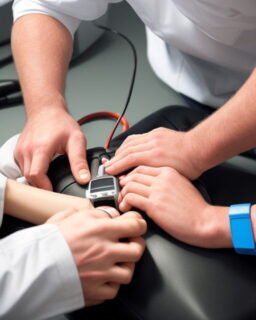Cardiac arrest is difficult to identify for a few reasons:
- The symptoms are sudden and severe. When someone goes into cardiac arrest, they suddenly lose consciousness, stop breathing, and have no pulse. This can happen very quickly, and it can be difficult to tell the difference between cardiac arrest and other medical emergencies, such as a stroke or a seizure.
- There are often no warning signs. In many cases, there are no warning signs before someone goes into cardiac arrest. This is especially true for people who have underlying heart conditions.
- The signs of cardiac arrest can be mistaken for other conditions. As mentioned above, the symptoms of cardiac arrest can be mistaken for other medical emergencies. For example, someone who is having a seizure may also lose consciousness and stop breathing. This can make it difficult for bystanders to know if someone is having a cardiac arrest or another type of medical emergency.
Because of these factors, it is important to be aware of the signs of cardiac arrest and to call 911 immediately if you see someone who is unresponsive, not breathing, and has no pulse. Even if you are not sure if someone is having a cardiac arrest, it is always better to err on the side of caution and call for help.
Here are some tips for identifying cardiac arrest:
- Look for the ABCs: A for unresponsiveness, B for no breathing, and C for no pulse.
- Check for agonal breathing: Agonal breathing is gasping or gurgling sounds that may be mistaken for normal breathing.
- Check the person’s carotid pulse: The carotid pulse is located on the side of the neck, just below the jawline.
If you see someone who is unresponsive, not breathing and has no pulse, it is important to start CPR immediately. CPR can help to keep the blood and oxygen flowing to the brain and other vital organs until help arrives.
Here are the steps for performing CPR:
- Check for responsiveness. Gently shake the person’s shoulders and ask them loudly if they are okay.
- Call 911. If the person is not responsive, call 911 or your local emergency number.
- Start chest compressions. Place the heel of your hand on the center of the person’s chest, just below the nipples. Place your other hand on top of the first hand and interlock your fingers. Lock your elbows and straighten your arms. Press down on the chest with a smooth, steady motion, using your body weight to generate force. The depth of each compression should be about 2 inches.
- Give two breaths. After every 30 chest compressions, give the person two rescue breaths. To give a rescue breath, pinch the person’s nose closed and cover their mouth with yours. Blow into their mouth until their chest rises.
- Continue CPR until help arrives. Continue CPR in a ratio of 30 compressions to 2 breaths until help arrives.
By following these tips, you can help to save a life in the event of a cardiac arrest.

